Welcome to the second post in the Suit A Long!
Last time we covered what type of pattern to order. Now, while you’re either waiting for your pattern to arrive or printing and assembling your e-pattern, let’s talk fabrics!
We’re currently in Spring here in the USA, so I’ll be focusing on fabrics that are appropriate for Spring and Summer.
I’m personally making an unlined summer suit. Because of this, I’m not covering linings or wools or proper tailoring in this sew-a-long. Instead I’m focusing on the basic suit construction for an untailored suit. You can get as crazy with tailoring as you want, and I’ll cheer you from the sidelines, but I’m doing a simpler style for mine :)
– – What about seam finishes? – –
I’m going to be using seam binding for mine. I use 100% rayon seam binding (if you google Hug Snug, you can buy yourself a bolt in the color you want for relatively cheaply). Seam binding like this is entirely period correct. This type of finish is what we not think of as “Hong Kong seams.”
But I digress. Just making a mental note to buy seam binding.
– – What about fabric pattern? – –
Well, because of the cut of the coat, I’m NOT going to suggest you use a big pattern, or a stripe, unless you don’t care if the pattern sort of “droops” on the side. For example, the coat is cut very full and flared at the side. The pockets, then, would not be on the straight of grain when you attach them, if you want to match the pattern. When the coat is then belted in to the body, the pockets will look a little crooked to the eye, even if they’re on there just right. Because of this, I suggest you focus on something without an obvious fabric print direction or nap.
The skirt, however, is an A-line skirt, and it’s up to you- feel free to go crazy with pattern matching on the side seams if you want. In fact, I’m on the look out for a wide stripe for mine.
– – What about fabric weights? – –
I’m going to suggest you use a mid-weight fabric. The silhouette of the period has a somewhat “flared” appearance. Because of this, light weight fabrics will tend to collapse on your figure. Heavier weights, or stiffer fabrics, will stand out pretty far from the body. It’s entirely up to you- if you like the exaggerated silhouette you can consider something stiffer or with more body. Personally, I’m going to try something mid-weight. What I am going to suggest, if you are considering a different weight, is to use an inexpensive fabric in the same drape or weave as your finished garment. That way you can see if what you’re thinking of using will work before you actually spend good money on your actual fabric choice. If you’re considering a pattern, you can do the same thing. I’ve seen stripes drawn on muslin in order to test pattern, so when you try it on you can see how it looks. Great idea, right?
– – What about fabric types and content? – –
Well, that’s why I’ve scanned in these original catalog images from you! These are from 1916, the same year as the pattern was released. These images are from the W. & H. Walker company out of Pittsburgh, PA.
Don’t forget to READ the descriptions in the pictures! Don’t just look at the pretty pictures. The descriptions of the suit and fabrics will help you select proper colors and fabric types.
On left is a corduroy suit with a linen collar, cuff, and pockets. This suit came in white with Copenhagen blue trimming.
At right, a velvet finished corduroy suit (I think one with a very narrow wale would work for this). All white with Copenhagen blue collar cuffs, and pockets OR white with rose colored collar, cuffs, and pockets.
At bottom right is cotton fabric for suiting, and if you read, there are many different types available (stripes, plaids, checks, etc)
Most noticeably on this page is the “Shepherd check suiting”, which was in black and white. It has “worsted appearance” but doesn’t say the actual fabric content. This would be great for the skirt and for the jacket trim (collar, cuffs, etc).
This one snuck in because it was on the facing page, but instead of deleting it, I’m going to say you can keep it in mind for blouses ;)
On this page we have “Long Beach Suiting” with a “worsted” appearance. This could well have been inspired by the “Palm Beach fabric” that’s so famous for suits for ladies and men. Palm Beach was a linen, wool, silk blend (I think). It was available in tan, gray, cream, or stripe.
At bottom there are two more check suiting fabrics, both black and white check.
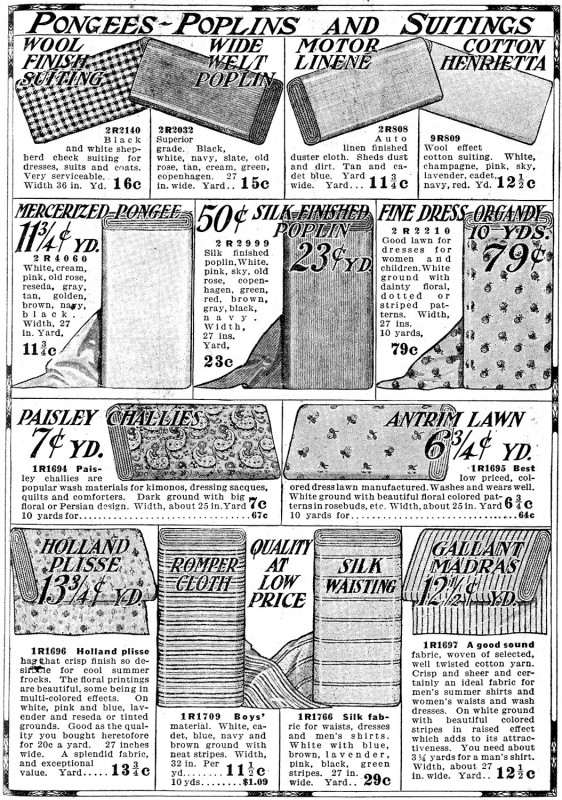 Here at top are some appropriate fabrics, including another black and white check, cotton suiting, and “Motor Linene”, which may not be appropriate, but I think is AWESOME (“Sheds dust and dirt” LOVE early automobile fashions).
Here at top are some appropriate fabrics, including another black and white check, cotton suiting, and “Motor Linene”, which may not be appropriate, but I think is AWESOME (“Sheds dust and dirt” LOVE early automobile fashions).
– – What about yardage? – –
The original yardages were sketchy, at best. To save time, I give general yardages for you, but they are based on the nestled pattern. Here’s more info from my website, showing the image from the back cover for yardages.
* * * * Don’t forget to order any interfacings or hair canvas, seam binding, buttons (optional) and all other accouterments you’ll need! * * * *
And most importantly, don’t forget your mock up fabric! But it in the same amounts listed above, and you may have a little left over.
– – I’m giving you a disclaimer here: Neglect to make a mock up at your own peril. – –
Seriously, though, sometimes these old patterns need adjustments. Don’t just go for it and hope it works out. Mock ups are important, especially when so much fabric needs to be bought for this project. Not making a mock up will be a waste of money if your finished suit doesn’t fit how you want!
Do you have any favorite places to shop for fabric online? Leave me a comment so everyone else can know your favorite sources!

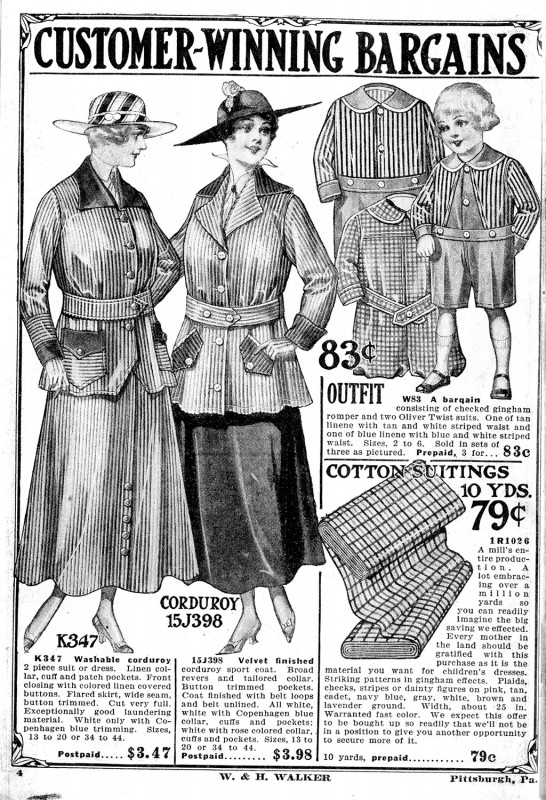
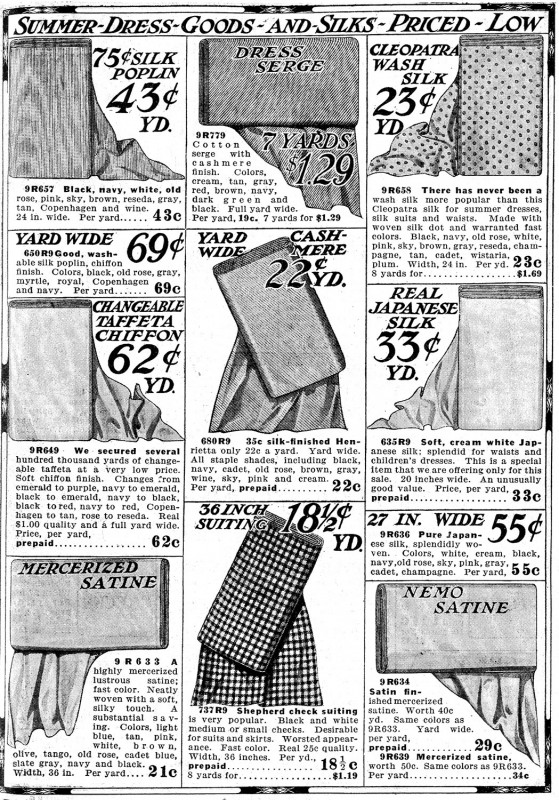
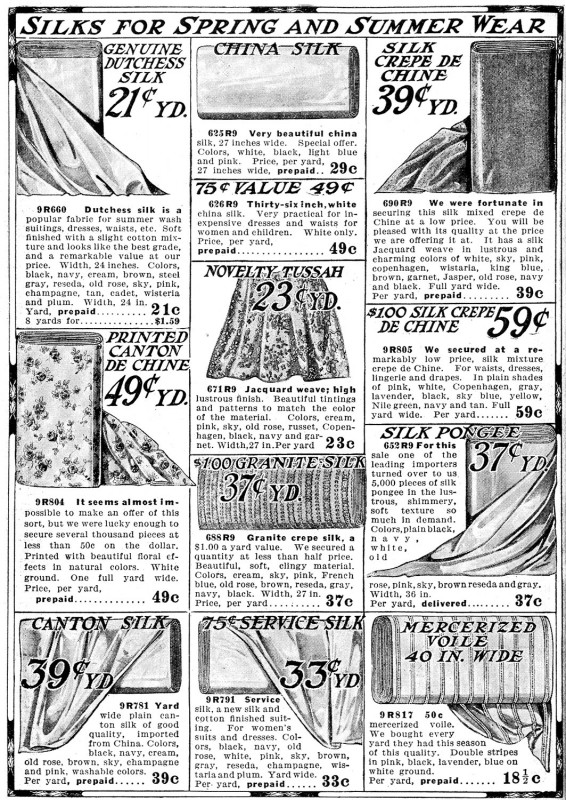
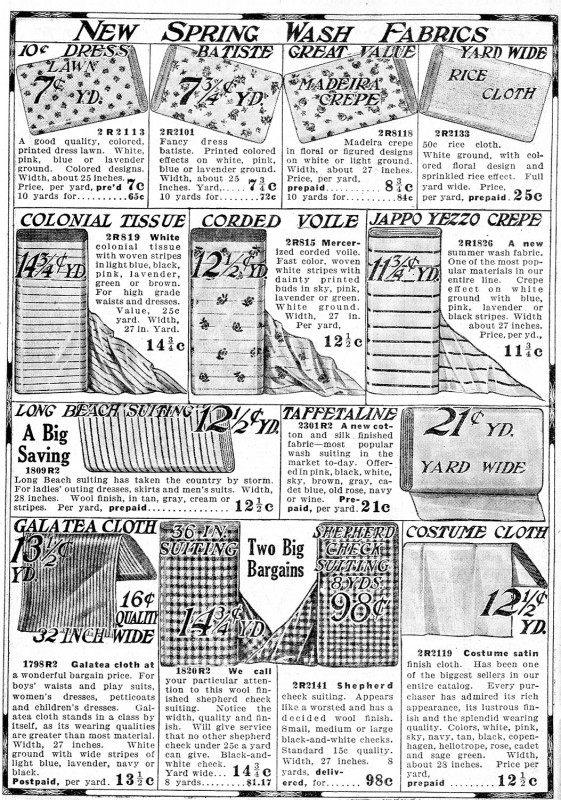
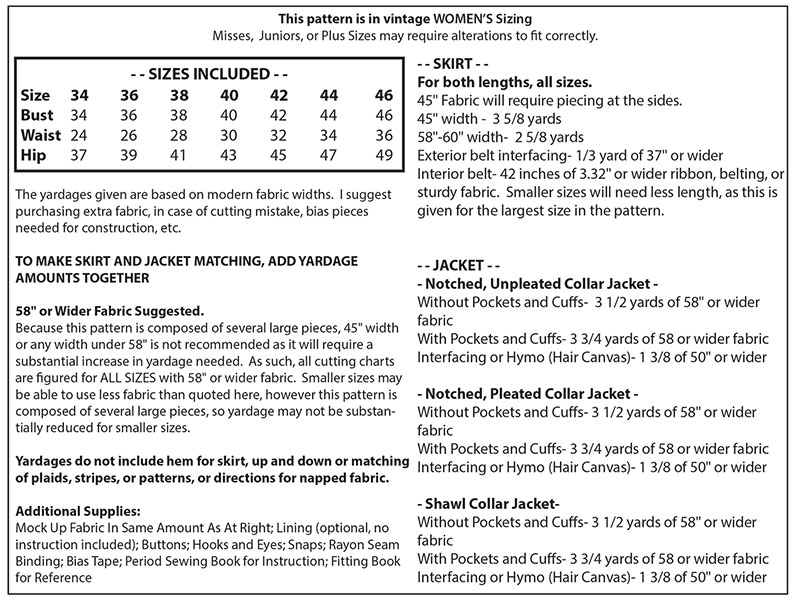
Evis
April 20, 2014 at 4:48 am (11 years ago)What a great post! I ahe already the fabric for the jacket; a checked twill. With some stretch unfortunately, I will have to “kill” that with fusible interfacing. It was on sale so I didn’t argue with the stretch.
But now I feel that I should have gone for babyord, which my fabric store have lots of in very nice colour.